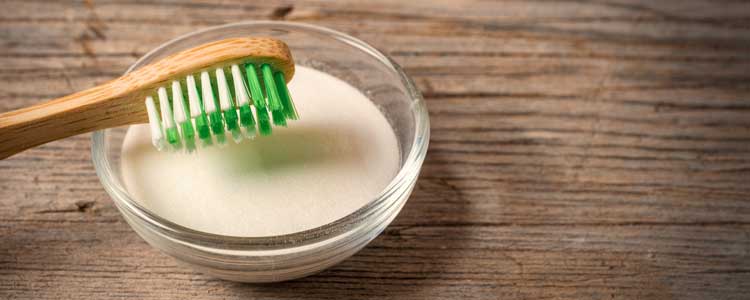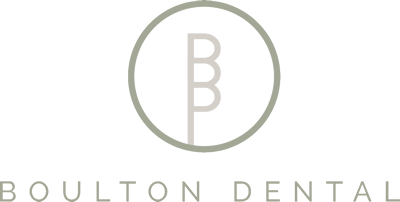
01 Aug 5 Dental myths you need to know.
We’ve all seen the dental hacks (or myths) online and you have either tried them yourself or know someone who has. The problem is that those hacks probably won’t work or worse still, may actually do more damage to your teeth than good.
We’ve put together 5 of the more common myths and outlined alternatives that are available that will provide proven results, ‘without’ damaging your teeth:
OIL PULLING
Oil pulling for those not in the know sounds a bit strange. It involves holding and swilling oil, like coconut oil for example in your mouth for up to 30 minutes.
The method dates back over 3000 years and was originally used in Ayurvedic medicine. The oil is then spat out. It is said to be antibacterial and prevent or even cure a number of oral health problems, such as dental decay and periodontal disease (gum disease). Unfortunately, zero studies have identified any evidence of plaque reduction or the presence of antibacterial properties.
As a reliable alternative, you are better served to use a twice-daily combination of dental floss and brushing with a toothbrush in good condition using fluoride toothpaste. This is proven to effectively reduce your risk of dental decay and periodontal disease.
CHARCOAL-BASED PASTES AND POWDERS
Alternative health practitioners and supporters are keen advocates of charcoal based pastes and powders. These have become very popular on the Internet and more specifically, on social media as a teeth-whitening treatment.
One of the main concerns of this trend is that charcoal is highly abrasive which can actually damage your teeth and gums.
Additionally if you want to whiten your teeth, it is important to understand that dental staining occurs both internally (intrinsic) and externally (extrinsic).
Unfortunately, charcoal absorbs only the surface particles that cause tooth staining, so the internal or deeper dental stains on the teeth will not be whitened. Only a dentist prescribed bleach containing the right amount of peroxide will work on the intrinsic stains.
If charcoal is used instead of fluoride toothpaste, users will miss out on the regular fluoride treatment that is vital for dental decay prevention.
TONGUE SCRAPING
As you would probably know, lots of bacteria live in your mouth and particularly on the tongue. However, there is no need for your tongue to be scraped using specific tongue scraping devices or similar heavily marketed products.
A toothbrush will do the trick just as well. Just gently brush the surface of your tongue with some toothpaste and your toothbrush to best keep your tongue healthy. This will also reduce the chance of bad breath.
BAKING SODA
Although using baking soda on your teeth may sound like an old wives tale, it is actually added to some toothpaste’s on the market to assist in teeth whitening. Baking soda, when used in toothpaste, has a mildly abrasive nature to the particles and helps to reduce the acidity of the oral environment by neutralising the acids.
The concern for users is in making your own baking soda paste. It could not only damage the enamel by being too abrasive, but it also won’t include the detergents and fluorides found in normal toothpaste. These ingredients play an important role in keeping your teeth, mouth and gums healthy.
BLUE-LIGHT TEETH WHITENING
It would be surprising if you haven’t seen an advertisement for some kind of blue-light teeth whitening system. They seem to be everywhere and are generating millions of dollars in revenue.
But, and there is a serious but with this one… Although the marketing may be very convincing, the results are certainly not. In fact, the blue-lights don’t do much at all.
You may achieve minor results of around 8%, but there is another downside that you may not know about. The reason that your teeth will look so white is that the lights will dehydrate your teeth. However, once the saliva covers your teeth and rehydration occurs, your teeth will return to a more yellow shade, all within a few hours!
Plus the more you use the light, the more dehydrated your teeth will become, and this can lead to severe tooth sensitivity.
It is important that when you choose to whiten your teeth, a low and slow approach is taken. A low concentration dental bleach is placed into custom fitted trays by your dentist so that the bleach sits around your teeth for a few hours per day.
This process is repeated over a few weeks until the shade of your teeth is lightened. This greatly reduces the chance of sensitivity and eliminates the risk of long-term nerve damage to your teeth and gums.
Bleaching can also be done at the dental surgery using a stronger bleach and is usually left on the teeth for about an hour. However for some patients, this may increase the sensitivity of your teeth and gums. This type of bleaching is normally used in conjunction with lower concentration take-home bleach for use in your custom fitted trays.
THE VERDICT
Before you try anything you see online or advertised elsewhere that you apply to your teeth, do your own research. Find out if it has been professionally tested and what results can be expected.
Keep in mind that damage to your teeth and gums may be permanent and is often irreparable. Tooth erosion may occur so any treatment should be carefully considered and perhaps even discussed with your dentist before it is undertaken.

No Comments